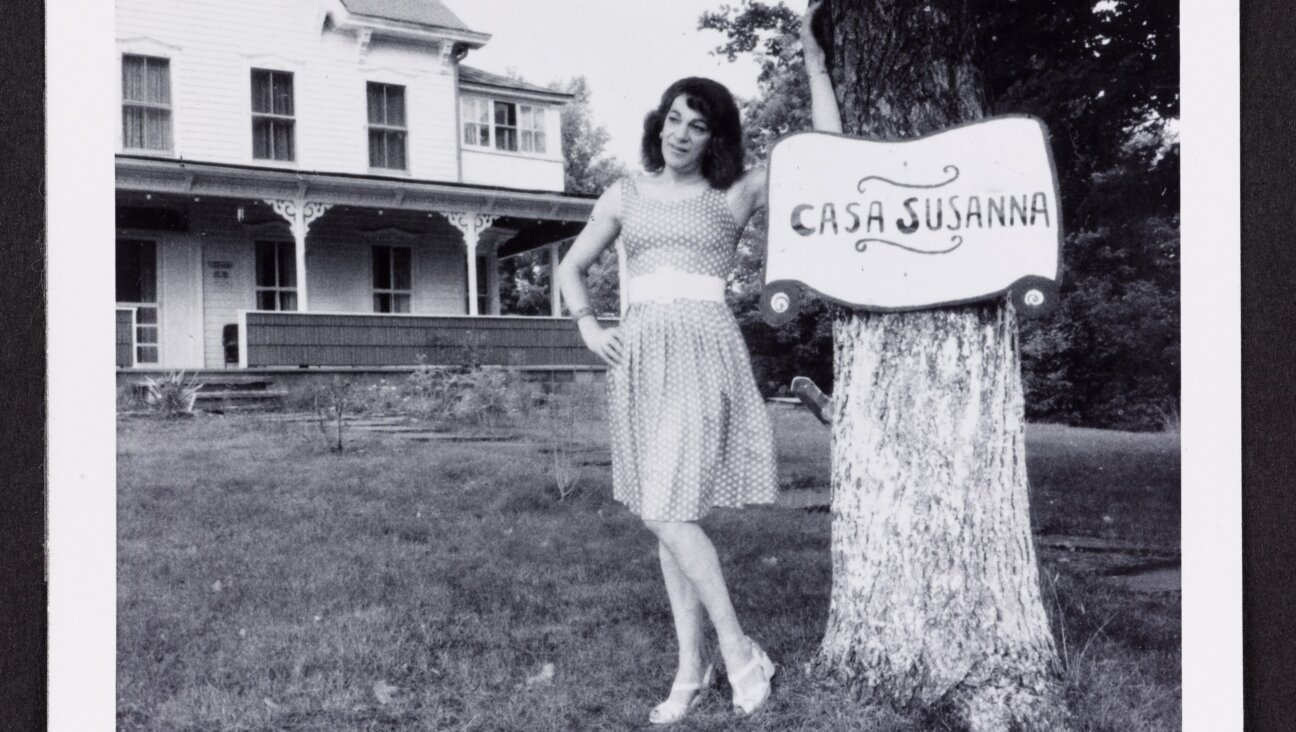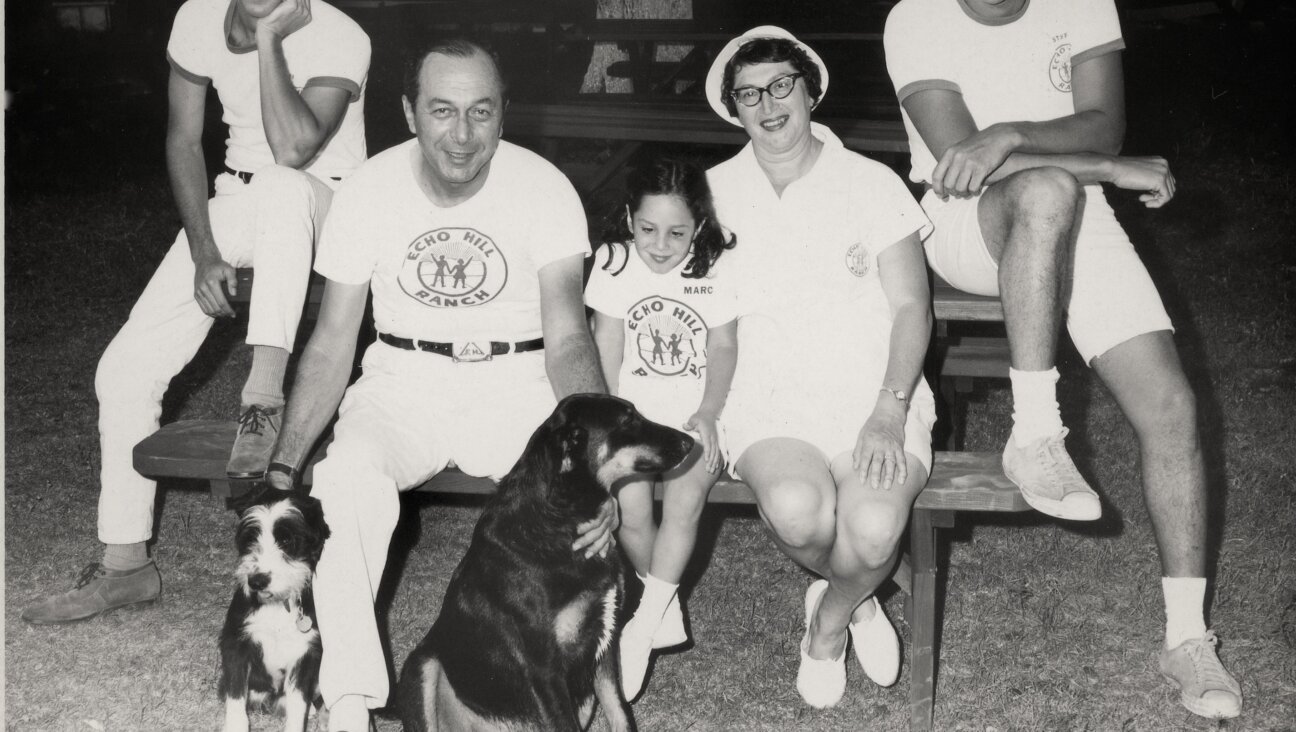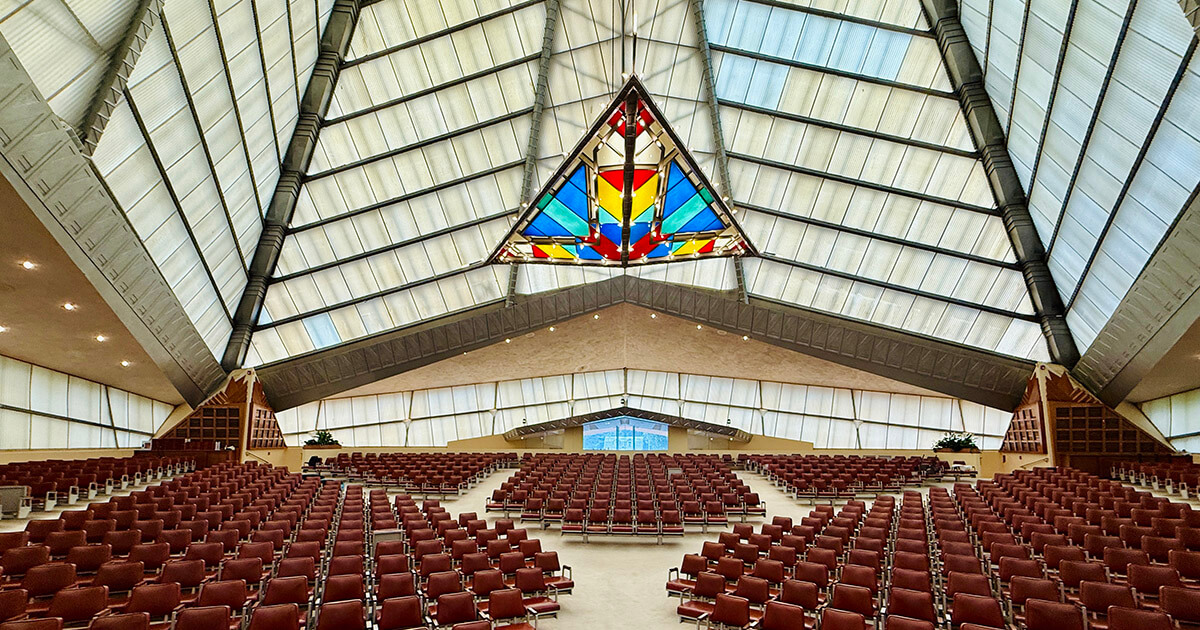Why Collectors of ‘Antisemitica’ Aren’t Always Anti-Semites

Image by Kurt Hoffman
In our capitalistic world, everything (tangible) is ownable and collectible, including items that one might assume no one ever would choose to own or collect, such as signed mug shots of Charles Manson, African slave trade shackles or Islamic State T-shirts and hats. Atrocities are to be learned from, one might think, the paraphernalia associated with them left to researchers or permanently housed in police storage lockers, not publicly sold like, well, T-shirts and hats. Among the stranger collecting categories of the world comes what’s known as “antisemitica” — figurines, dolls, puppets, postcards, newspapers and magazines, paintings, posters and miscellaneous objects that depict or describe negative Jewish stereotypes. Think of it as the visual backdrop leading up to the Holocaust.
“I have a matchbook whose cover shows a European hotel and on it are printed the words ‘Selective Clientele,’ meaning no Jews allowed,” said Simon Cohen, a retired London doctor who has been collecting antisemitica since the late 1990s, much of it from the 19th and early 20th centuries. He has amassed approximately 2,000 items at the cost of “a few hundred thousand dollars.” The sellers have been European auction houses and Jewish dealers of Judaica. There are poster and postcard images of Jews as rats, spiders and goats, images of hook-nosed Jews hugging piles of gold coins or with blood on their hands, denunciations of Jews in French and German – even publications from the United States. What to do with it? “It’s placed around the house, not necessarily in the middle of a wall, more like lurking around the sides,” said Cohen. “I don’t worry about the impression this work makes on people.”
His wife doesn’t want any of it (“she tells me, ‘you’re mad’”), and his children aren’t interested in inheriting it (“they’d be interested in the money from selling it”). However, Cohen hopes to create an online exhibition featuring some of his collection and otherwise donate it to a museum where it could be researched and displayed, offering a lesson not only about the past but also for the present and future. “You would have thought that anti-Semitism would disappear after the Second World War, but I see a lot of unpleasant overtones in anti-Israeli protests. I see photographs in newspapers of some imam in the Middle East denouncing Jews, Israel and America while there is a poster of a caricatured Jew in the background. Images are important, and there is a continual bombardment of images. This image of Jews in these posters arguably led to 9/11.”
For many collectors, as well as those involved in sales, there is an ick factor in antisemitica. Peter Ehrenthal, a 95-year-old retired Judaica dealer in Manhattan who has amassed his own collection of antisemitica, noted “a sadistic or masochistic trait to it. Some of it is very interesting, but not everyone would understand why someone would want this in their homes.” And in homes it largely goes, since most buyers are private individuals rather than libraries, museums or universities where the material might be acquired specifically for research purposes. “All of the buyers I’ve had are private collectors,” said Jonathan Greenstein, president of J. Greenstein & Company, Inc., an auction house specializing in Judaica in Cedarhurst, New York. “Maybe some are secret anti-Semites, but that hasn’t been my impression.”
Last August, Swann Galleries, an auction house in New York, included in its Vintage Posters sale 20 items labeled anti-Masonic but largely anti-that were created in Serbia during the early 1940s, of which half sold, none for more than $4,000. “We’ll take this material when it is consigned from Jewish sources,” said Lauren Goldberg, a poster specialist at Swann. “We don’t want to deal with skinheads.” She noted that the auction house has refused consignments of Nazi posters and swastikas (“it gets people angry”), and it is the hope that antisemitica bidders “aren’t buying them to frame them and put them in the middle of their living room but to develop and maintain an archive and to study them.” As one would expect, the auction house does not ask if bidders and buyers are Jewish.
Sotheby’s, which holds regular Judaica sales in New York and London, doesn’t “accept any of this kind of material for consignment,” said Sharon Liberman Mintz, curator at the Jewish Theological Seminary and a consultant for Judaica sales at the auction house. “We feel uncomfortable dealing in it and don’t want to commercialize it,” said Mintz. Sotheby’s does not want to be the go-to place for bigots. “There are worries that someone could buy it for the wrong reasons. You can’t control people’s intentions.”
The possibility that this type of material will get into the wrong hands is an ongoing concern for both auctioneers and private dealers, although of course antisemitica started out in the wrong hands. Although no one can characterize the buyers of antisemitica, Vivian Mann, adjunct professor of Jewish art and visual culture at the Jewish Theological Seminary, claimed that “I’ve met collectors who buy it to keep it off the market. They don’t destroy it; they just don’t want other people to collect it.”
Cohen has exhibited some of his collected antisemitica at the Jewish Cultural Centre in London (in 2010) and elsewhere in Europe and Israel. In 2012, the antisemitica collection of Peter Ehrenthal was exhibited at the Wolfson Museum of Jewish Art, in the Hechal Shlomo Jewish Heritage Center in Jerusalem. Entitled “The Eternal Jew,” the exhibit included children’s books, games and toys, household utensils, graphic images and films “that were intentionally made to create a state of mind of hatred, fear and violence toward the Jews,” said Nurit Sirkis Bank, who curated the exhibition. “My goal as a curator was to show how man-made objects can have such a profound influence on the lives of millions of people.”
One of the most extensive collections of antisemitica can be found at the Jewish Museum Vienna, which features approximately 5,000 items donated by Martin Schlaff.
Institutions in the United States tend to be less welcoming of this material. Mintz noted that “the impetus for funding and building Jewish museums in America was to promote the value and importance of Jewish culture” – in effect, tell a positive story of the Jewish people, whereas antisemitica offers a counter-narrative told by the enemies of the Jews. She added that collecting and displaying antisemitica “promotes something that goes against” that more positive picture, which raises the question of whether or not an exhibition of what we now call hate speech combats or encourages it. (Simon Cohen, who was in Jerusalem at the time of “The Eternal Jew” show, stated that while visitors to the museum looked appalled at the displays, “the Palestinian workers who set up the exhibition seemed to be enjoying the images.”) Jewish museums in the U.S. have tended to skirt that issue by limiting their involvement with antisemitica altogether.
“We have some of it in the collection, but it’s not part of our programming,” said Bonni-Dara Michaels, collections curator at Yeshiva University Museum. “When it has been offered to us as a donation, or as part of a donation, we have accepted it, because we don’t want it in circulation.” Antisemitica “is not an active collecting area for the Jewish Museum” in New York City, according to a spokeswoman, although a few anti-Dreyfus posters are on display; they date back to the late 19th-century controversy in France over the guilt or innocence of a Jewish French artillery officer, Alfred Dreyfus.
The U.S. Holocaust Memorial Museum in Washington, D.C., does “not have an especially large collection of antisemitica,” according to Michael Grunberger, director of collections, but the material is regularly exhibited along with other pieces of Nazi propaganda “in order to provide the context of the persecution of Jews by Nazi Germany. We feel an obligation to tell the story of the Holocaust using authentic materials of the period.”
Antisemitica may be more of a sociological than an artistic phenomenon, less relevant to Jewish art and culture than to the more hostile outside world, and perhaps that’s why it is so seldom on display in art museums – Jewish or otherwise – in this country. It falls into a void, available for visitors to view at Washington’s Holocaust Memorial Museum but almost nowhere else except, perhaps, online.
“Antisemitica is not aesthetically interesting, and it works off stereotypes,” said Jacob Wisse, director of the Yeshiva University Museum. If an exhibit of antisemitica teaches anything, it is that Adolf Hitler wasn’t the first to denounce and call for the elimination of Jews.
Unflattering images of Jews continue to be produced, Mintz noted. “You see images in the Arab newspapers, which are vicious and not based on fact, such as [Israeli Prime Minister] Benjamin Netanyahu eating babies or having the blood of Palestinians on his hands. I think that’s anti-Semitic.” Political cartoons, of course, are not always based on fact but are interpretations and metaphors. Richard Nixon did not actually travel the country through sewer lines, popping up from manholes to sling filth at political opponents, as cartoonist Herbert Block depicted the then-vice president during the Eisenhower Administration, although people got the idea of nastiness. Cartoons of Netanyahu with blood on his hands may fit more into that Herblock category, because Israeli military action in the occupied territories and elsewhere certainly has resulted in large numbers of casualties, whether or not one supports it. Being anti-Israel, or anti-current Israeli policy, is not the same as being anti-Jewish. Images of Netanyahu eating babies, on the other hand, is a large stretch from the ongoing Israeli-Palestinian standoff, and “refers back to the old images of Simon of Trent,” Mintz said, referring to the medieval claims of a gentile child being murdered by Jews in order to make matzo with his blood – the origin of the “blood libel.”
Images associated with antisemitica may be a low-wattage constant in Middle East publications, although some other imagery that touches on the sensitivity of particular groups has been much in the news of late. Satiric images of the prophet Mohammad, most notably in the French publication Charlie Hebdo, garnered considerable attention when, in early 2015, two radicalized Muslim brothers of Algerian descent invaded the magazine’s editorial offices in Paris and opened fire, killing 12 and wounding 11 others. Declarations of the sacredness of free speech resounded in memorials and demonstrations on both sides of the Atlantic (“I Am Charlie Hebdo”).
Later in 2015, there was a shooting of nine African-American parishioners at the Emanuel African Methodist Episcopal Church in Charleston, South Carolina, by a young white man who posed with the Confederate flag on social media. The outcry led several Southern state capitols to remove Confederate flags from outdoor public venues after President Obama stated that they were symbols of slavery that belonged in museums rather than on flagpoles.
The responses to the two massacres were quite divergent — one claimed that offensive images should not be restricted, while the other showed a willingness to limit access to a polarizing image — but both focused on the symptom, which is the imagery itself, rather than on the ideas and attitudes that it represents. After centuries of oppression, perhaps certain groups find no need to make fine distinctions between the visual symbol and the ideology behind it. History is messy, with the progress of some often coming at the expense of others, which is why a growing number of towns and cities in the United States – including Albuquerque, Berkeley (California), Olympia (Washington), Portland (Oregon) and St. Paul – have renamed Columbus Day “Indigenous Peoples Day.” For most people, the holiday is just a day off with little to no reflection on what the Old World wreaked upon the New World, but changing the name forces those in the affected cities and states to give a moment’s thought to why the name was altered and what the new name signifies.
The reticence of more museums to exhibit antisemitica doesn’t spur a more positive presentation of Jewish art, culture and life. More likely, it reflects fear that they cannot do their educational jobs, in this case distinguishing for visitors between an examination of hate and hate itself. Perhaps museum curators and directors fear that they’ll recreate the experience of the Metropolitan Museum of Art when, in 1969, it staged a show titled “Harlem on My Mind,” consisting of photomurals of the run-down Harlem community, which engendered picket lines and cries of racism. (The Met made quite a few mistakes in putting together that exhibit, but there may not have been a way to do it right.)
Fear of who might buy it and fear of what viewers might understand from it play too much a part of the discussion of antisemitica as a collectible. The fact is, anti-Semitism is a central element of the Jewish religion and culture, as are holidays and stories in the Hebrew Bible that commemorate Israelites fighting back against oppressors. Antisemitica should be collected and exhibited by Jewish and non-Jewish institutions so that it can be better identified and understood not only by those who experienced the horrific points of Jewish history but by those who did not.
Ethnic caricatures don’t start wars, but they do reflect a culture in which hostility may arise. Bringing these hidden artifacts into the light would be a step toward better understanding.
Daniel Grant is the author of “The Business of Being an Artist” (Allworth Press).















